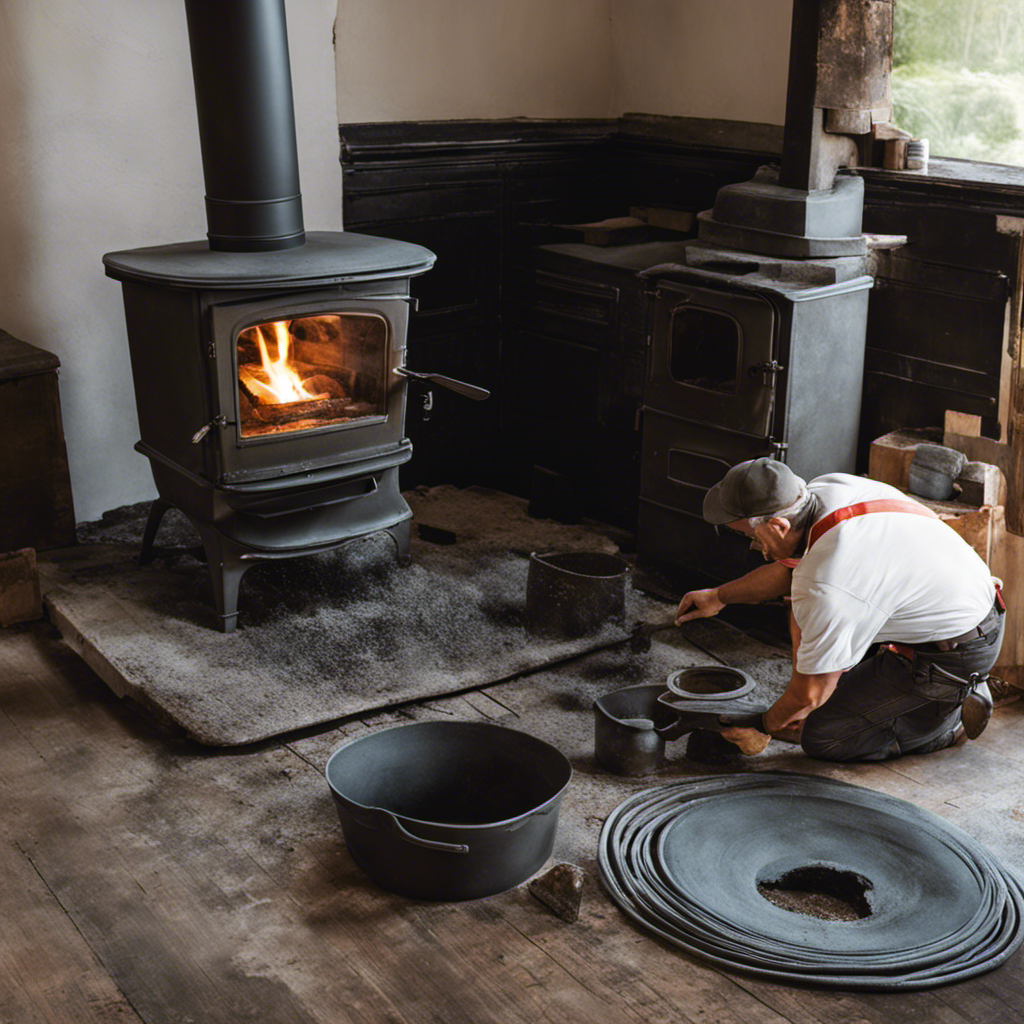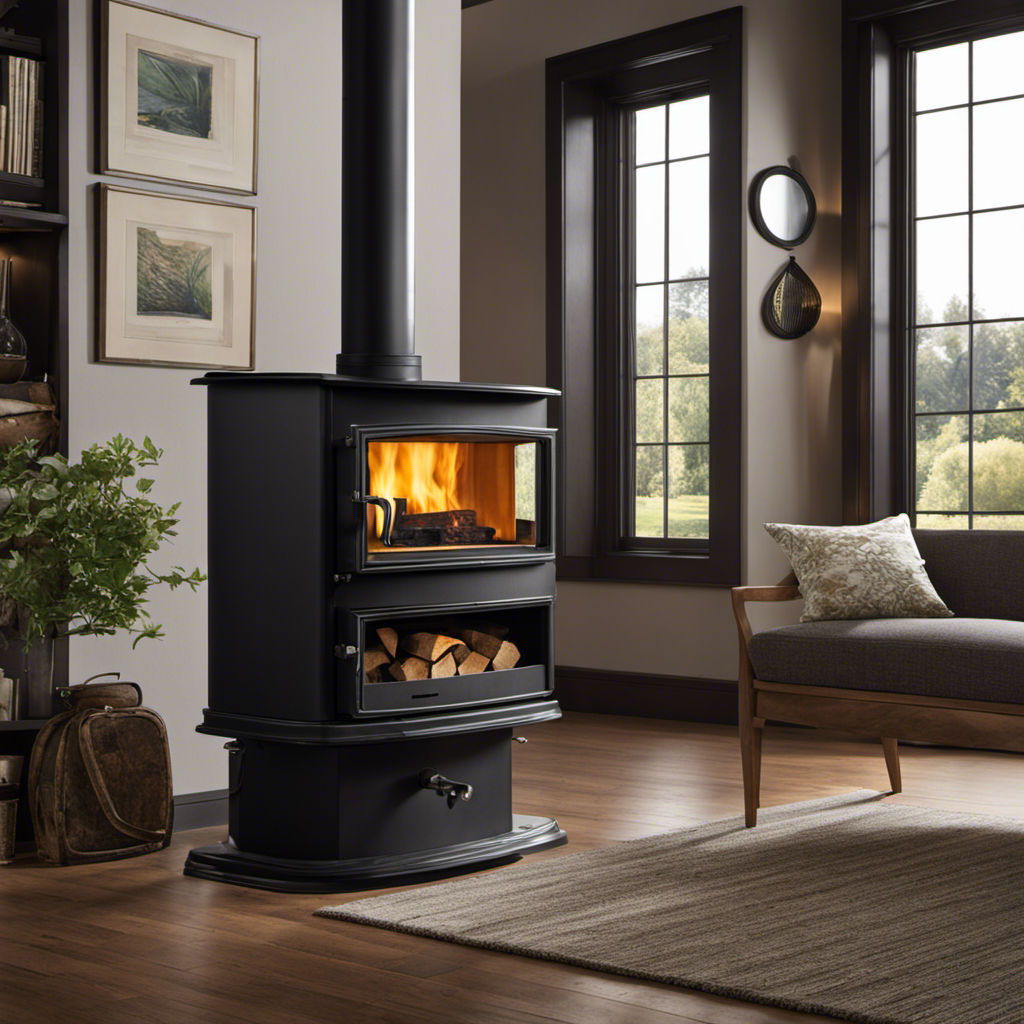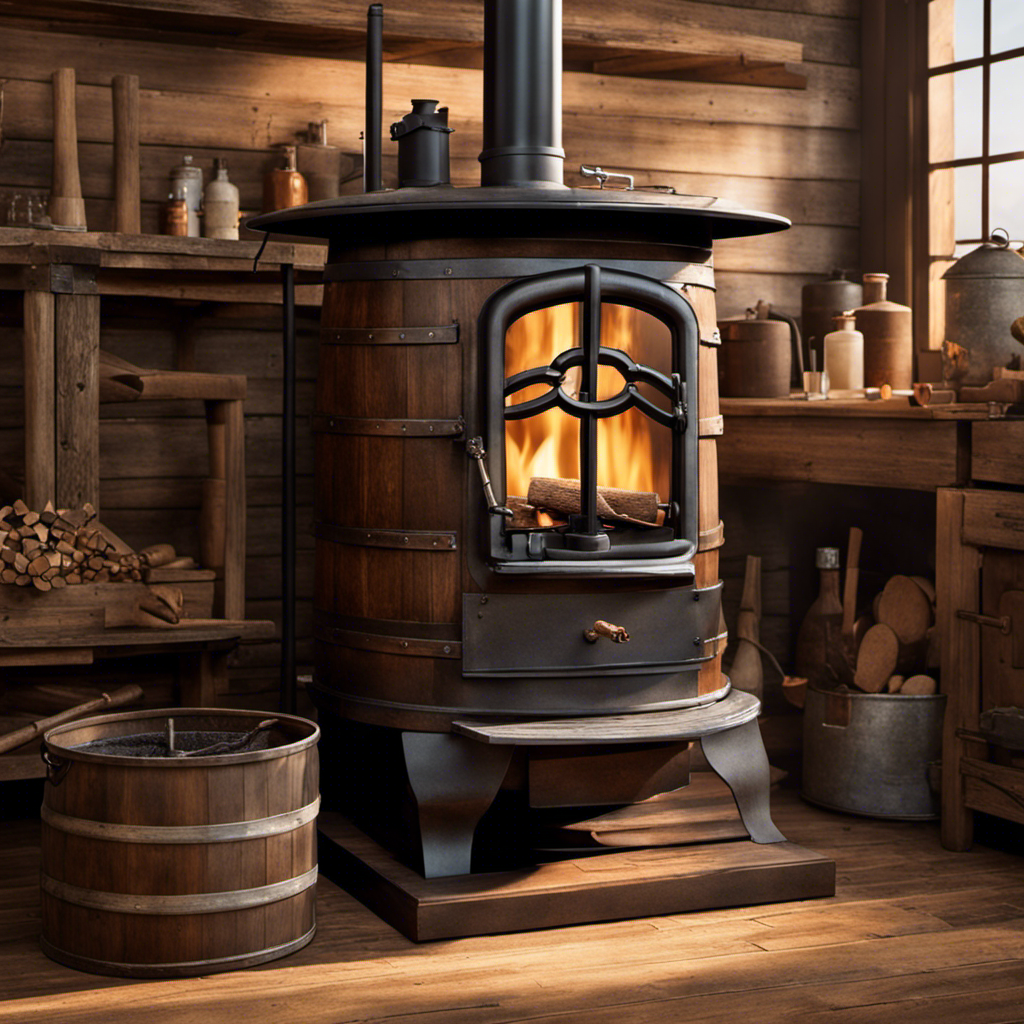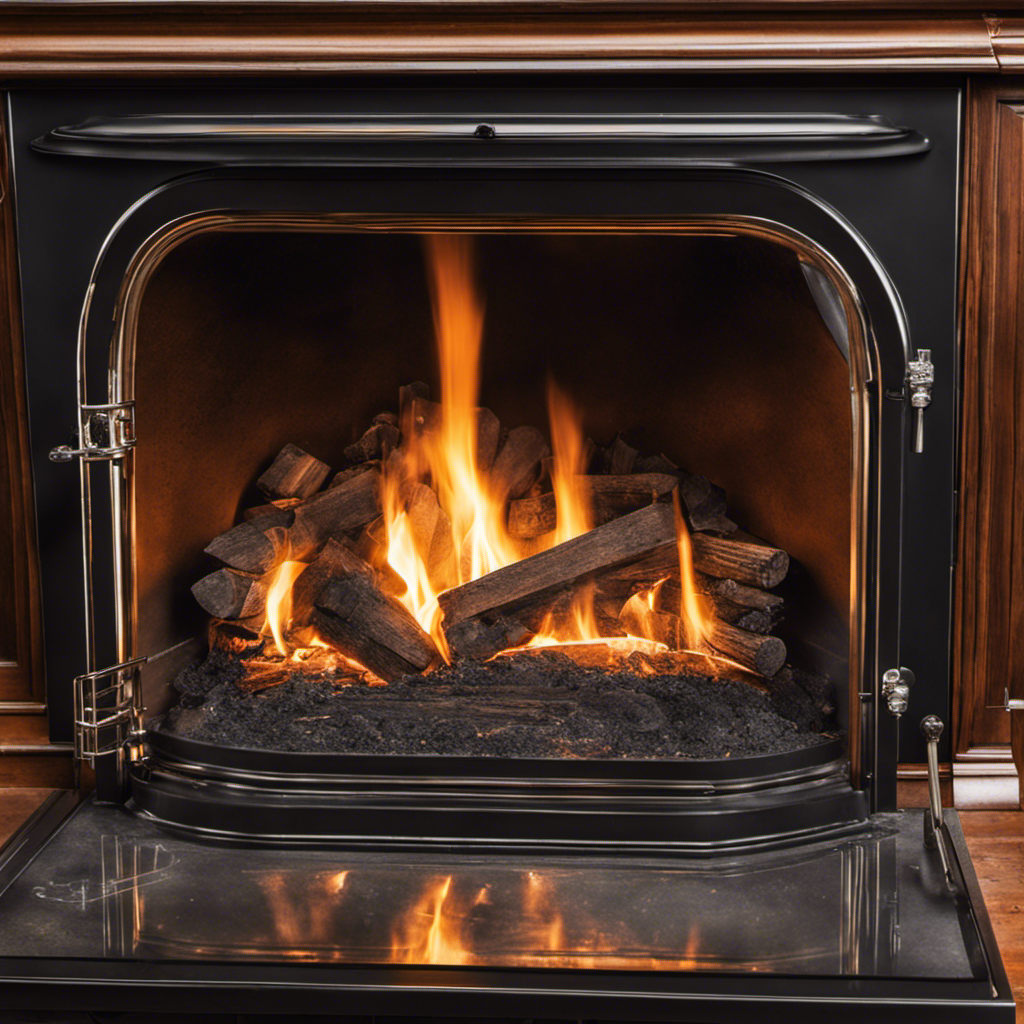I have figured out how to keep a fire burning all night long as someone knowledgeable in operating wood stoves.
Picture this: the cozy crackling of wood, the comforting warmth enveloping your home, and a peaceful night’s sleep without needing to tend to the fire.
In this article, I will share my expertise on choosing the right wood, preparing your stove, maximizing airflow, managing the fire, and maintaining a consistent temperature.
Get ready to master the art of making your wood stove burn all night.

Key Takeaways
- Season the wood for at least six months to reduce moisture content and ensure a longer burn time
- Use hardwoods like oak, maple, and birch for a denser wood with less moisture
- Insulate the chimney and clean the stove to improve efficiency and prevent heat loss
- Adjust the damper, stack wood tightly, and use a heat reflector for proper airflow and a slow, steady burn throughout the night
Choosing the Right Wood for Long-Lasting Burn
I find that using hardwoods like oak or maple ensures a long-lasting burn in my wood stove. When it comes to making my wood stove burn all night, the type of wood I choose plays a crucial role.
Firstly, it’s important to properly season the wood before using it in the stove. Seasoning involves drying the wood for at least six months to reduce its moisture content. This ensures a cleaner and more efficient burn.
Secondly, certain types of wood are better suited for a long-lasting burn. Hardwoods like oak, maple, and birch are dense and contain less moisture, resulting in a slower burn rate and more sustained heat output.
By selecting the right wood and properly seasoning it, I can maximize the burn time of my wood stove.
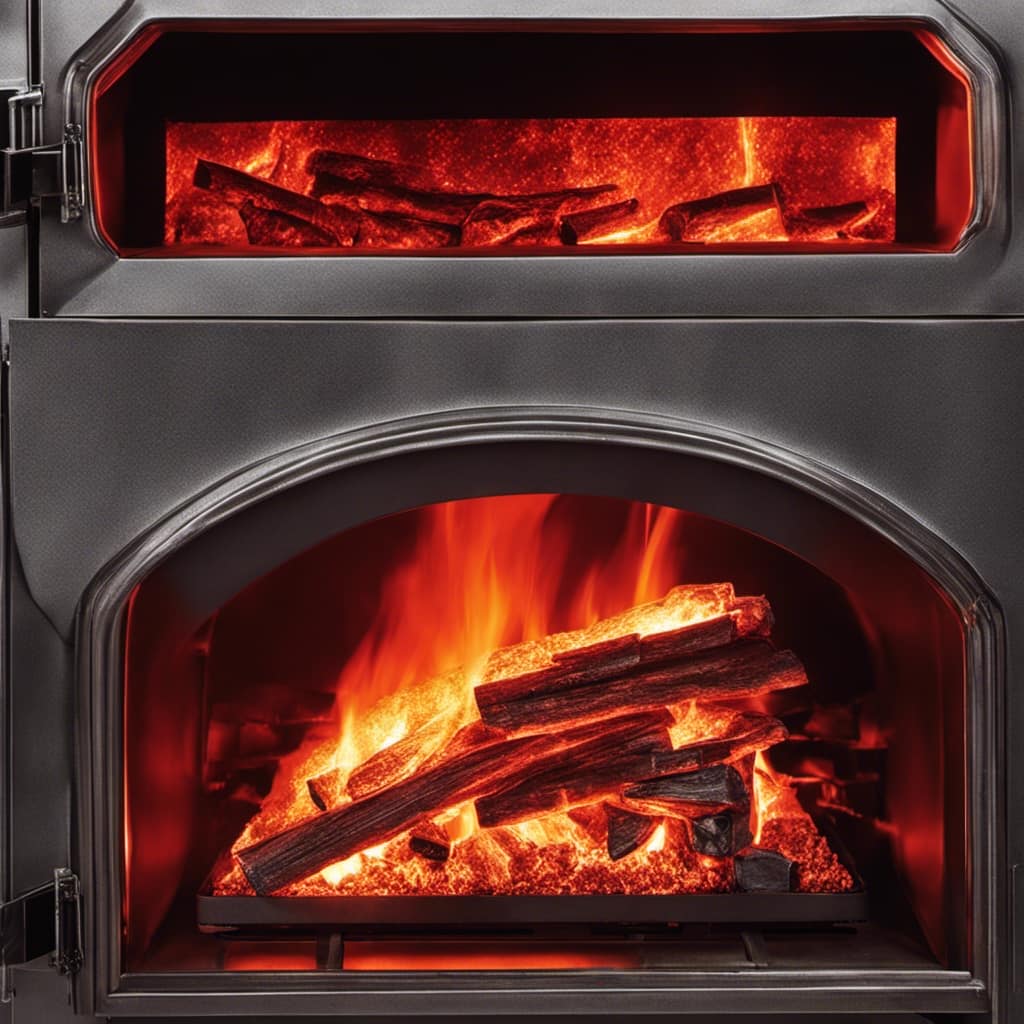
Now, let’s move on to preparing the wood stove for an all-night burn.
Preparing Your Wood Stove for an All-Night Burn
To ensure my wood stove continues to provide heat throughout the night, I need to properly prepare it. Here are some steps I follow:
-
Insulate the chimney: I wrap the chimney with a layer of insulation to prevent heat loss and improve efficiency.
-
Clean the stove: I remove any ashes or debris from the previous burn to ensure proper airflow and prevent blockage.
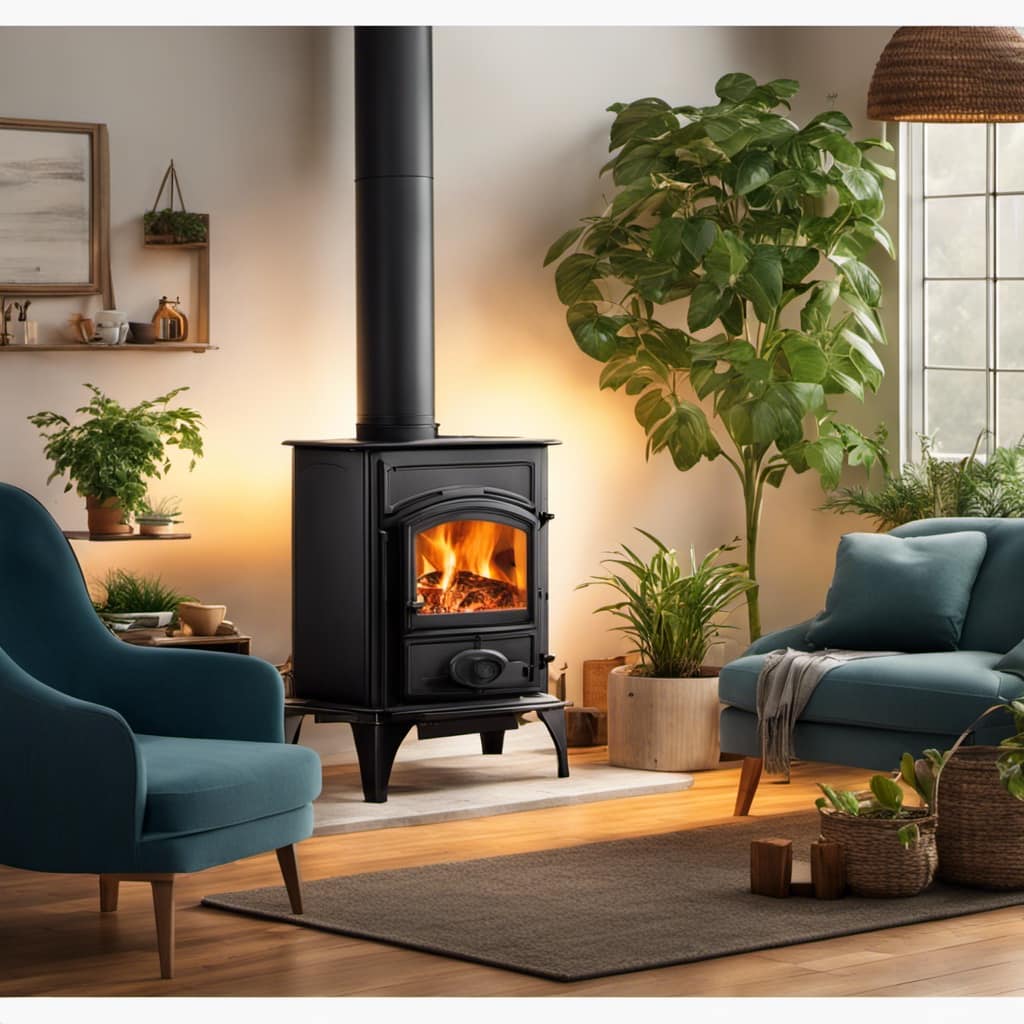
-
Use a heat reflector: I place a heat reflector on the wall behind the stove to reflect heat back into the room and increase its warmth.
-
Arrange the wood: I stack the wood tightly inside the stove, leaving enough space for proper airflow.
-
Close the damper: I adjust the damper to control the air intake and slow down the burn rate, ensuring a longer burn time.
Maximizing Airflow and Heat Distribution in Your Wood Stove
By properly arranging the logs and adjusting the damper, I can ensure that my wood stove efficiently distributes heat throughout the room.
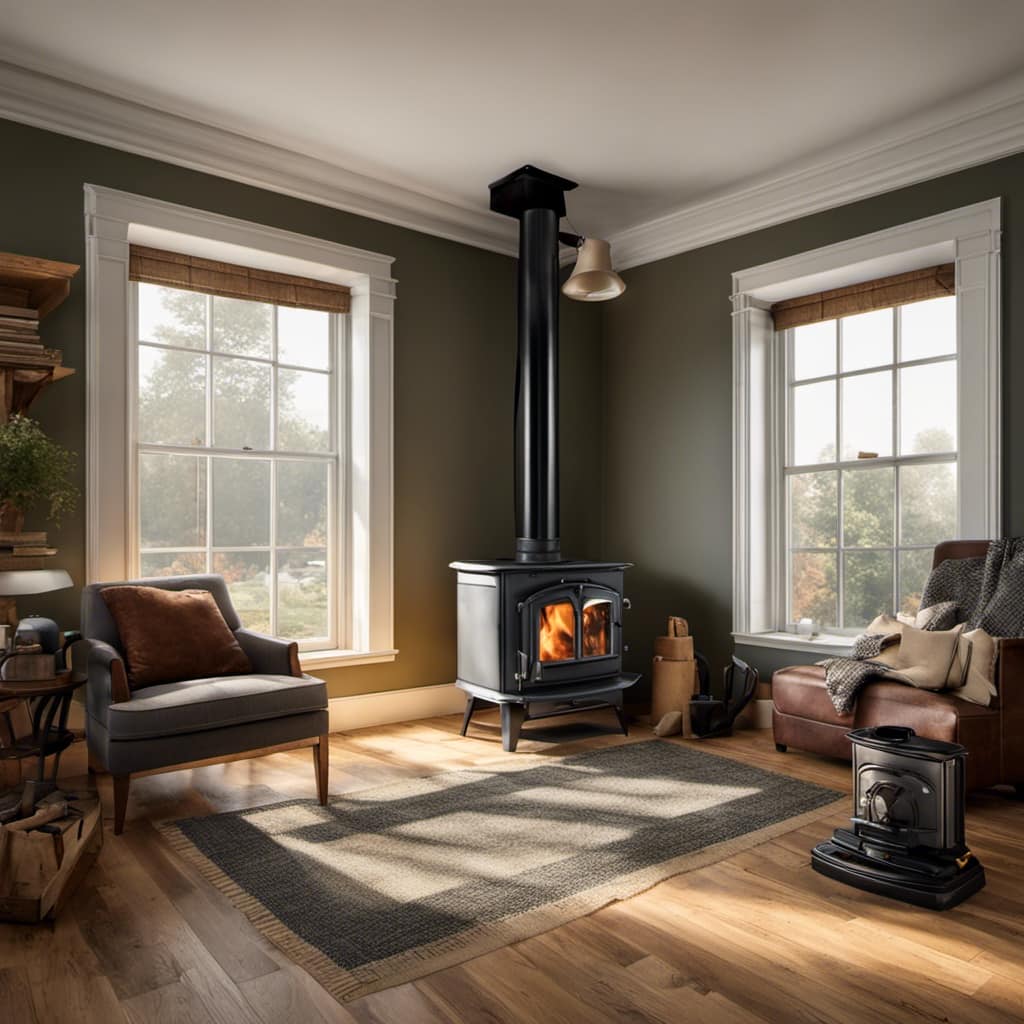
However, there are additional steps I can take to maximize airflow and heat distribution.
One important consideration is improving insulation around the stove. Insulating materials, such as firebricks or stove boards, can be placed around the stove to prevent heat loss and direct more warmth into the room.
Additionally, using a stove fan can greatly enhance heat circulation. These fans are designed to sit on top of the stove and use the heat generated to power a fan blade, which then pushes the warm air outwards.
Managing the Fire for a Slow and Steady Burn
Maintaining a consistent airflow and carefully controlling the damper allows for a slow and steady burn in my wood stove. To achieve this, I follow a few key steps:
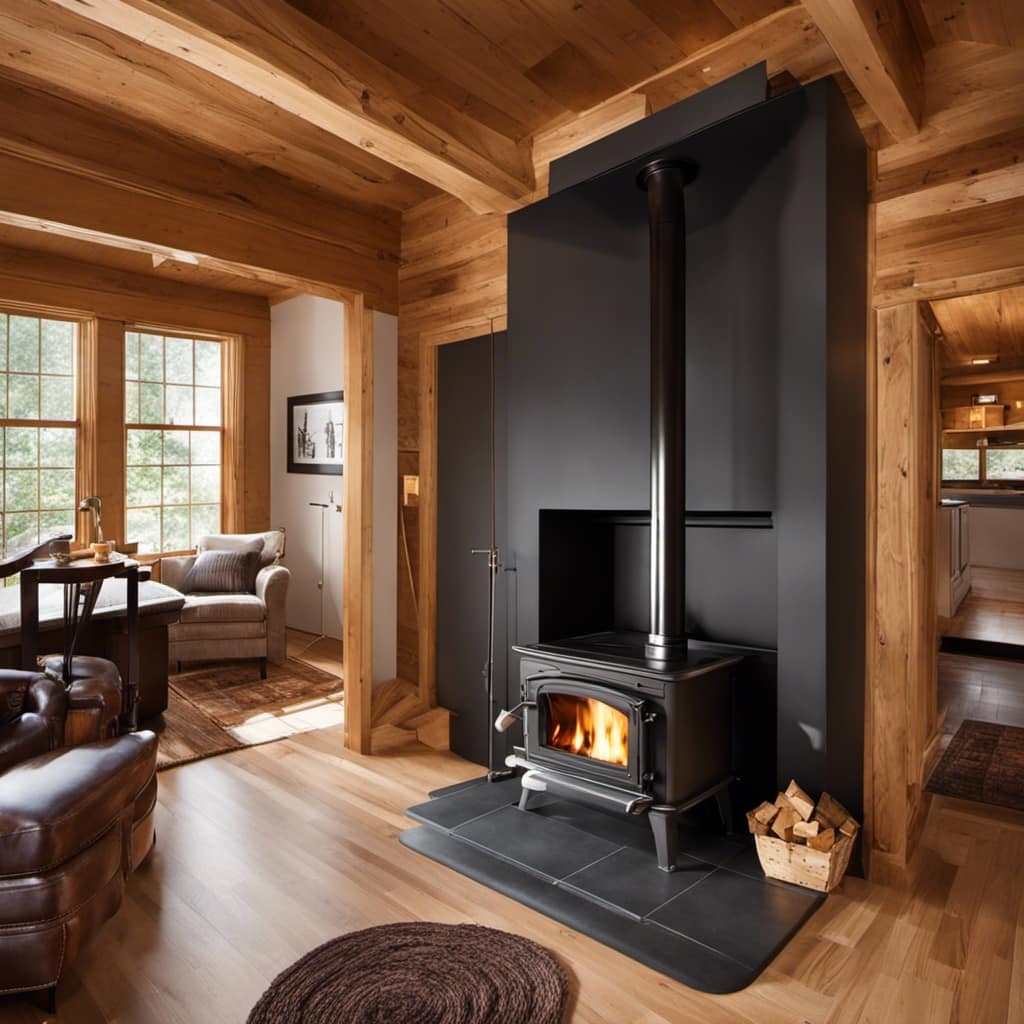
-
Adjusting the damper to maintain proper draft, ensuring efficient combustion and minimizing smoke output.
-
Placing firebricks inside the stove helps retain heat, allowing for a longer burn time.
-
Adding small, dry pieces of wood regularly rather than large logs helps maintain a steady temperature and prevents the fire from smoldering.
-
Keeping the stove door closed tightly to prevent excess air from entering, which can cause the fire to burn too quickly.
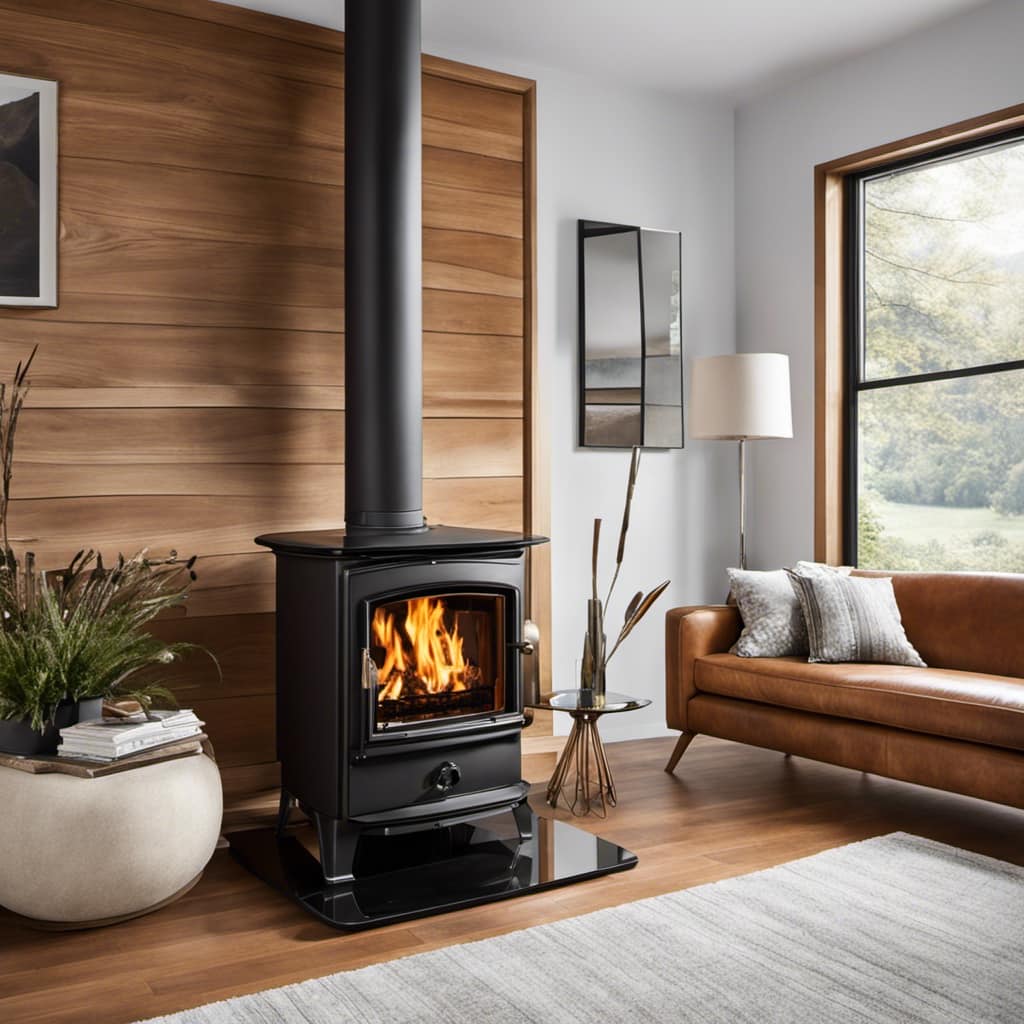
-
Regularly cleaning the stove and chimney to remove any creosote buildup, which can impede airflow and reduce efficiency.
Tips for Maintaining a Consistent Temperature Throughout the Night
Throughout the night, I rely on small adjustments to the damper and strategically placed firebricks to keep a consistent temperature in my wood stove. These tips not only help maintain a comfortable temperature but also reduce wood consumption.
Firstly, adjusting the damper allows me to control the airflow, ensuring efficient burning and preventing unnecessary heat loss.
Secondly, I strategically place firebricks around the stove to insulate it, preventing heat from escaping into the surrounding area and ensuring it stays inside the stove, keeping the temperature steady.
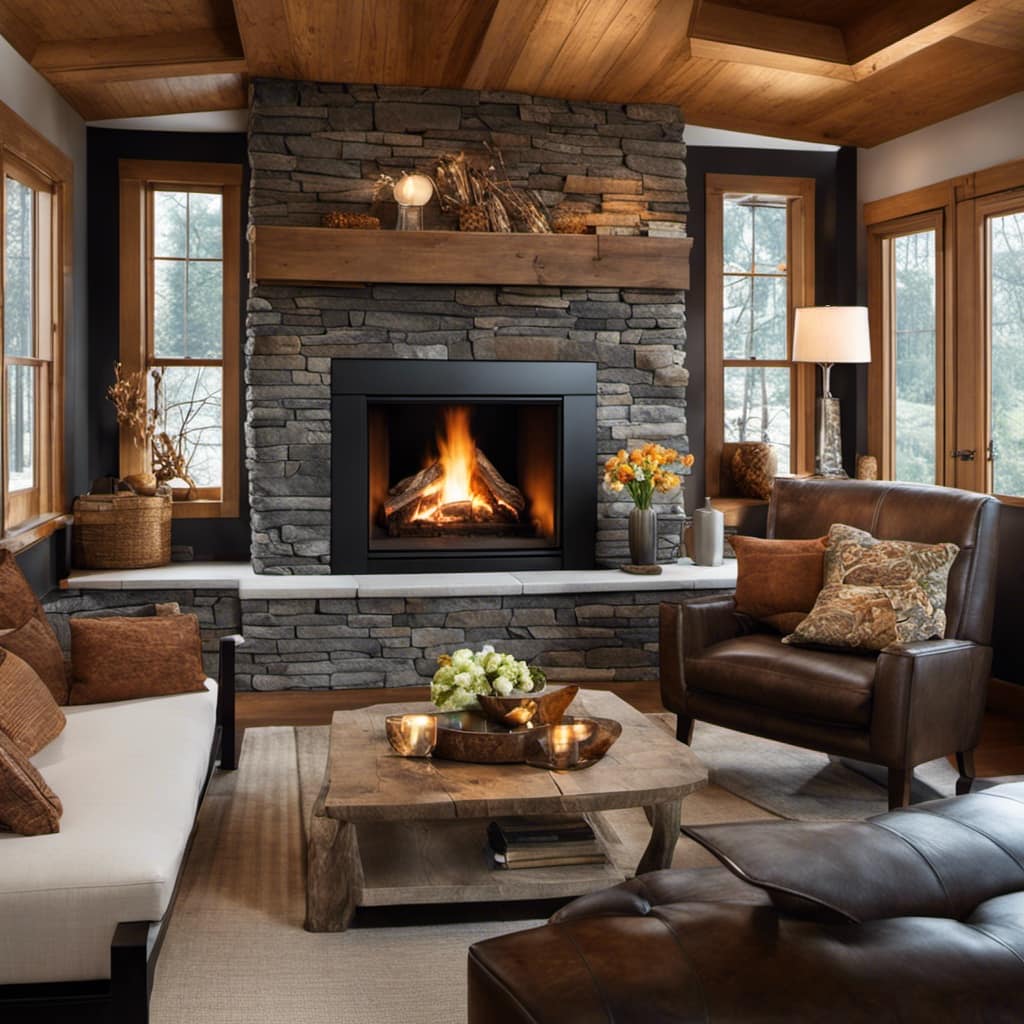
It’s important to properly insulate your wood stove to maximize its efficiency and minimize wood usage.
Frequently Asked Questions
Can I Use Softwood Instead of Hardwood for a Long-Lasting Burn?
Yes, you can use softwood instead of hardwood for a long-lasting burn in a wood stove. Softwood burns faster, but it can still provide sufficient heat. However, hardwood generally burns longer and produces more heat.
How Often Should I Clean My Wood Stove to Ensure an All-Night Burn?
To ensure an all-night burn, proper wood stove maintenance is crucial. Regularly cleaning your wood stove is essential for optimal performance. Additionally, using hardwoods like oak or maple will provide longer-lasting burns compared to softwoods.
Is It Safe to Leave the Wood Stove Unattended Overnight?
Yes, it is safe to leave a wood stove unattended overnight if it is properly maintained. Regular wood stove maintenance, such as cleaning and ensuring efficient burning, reduces the risk of accidents.
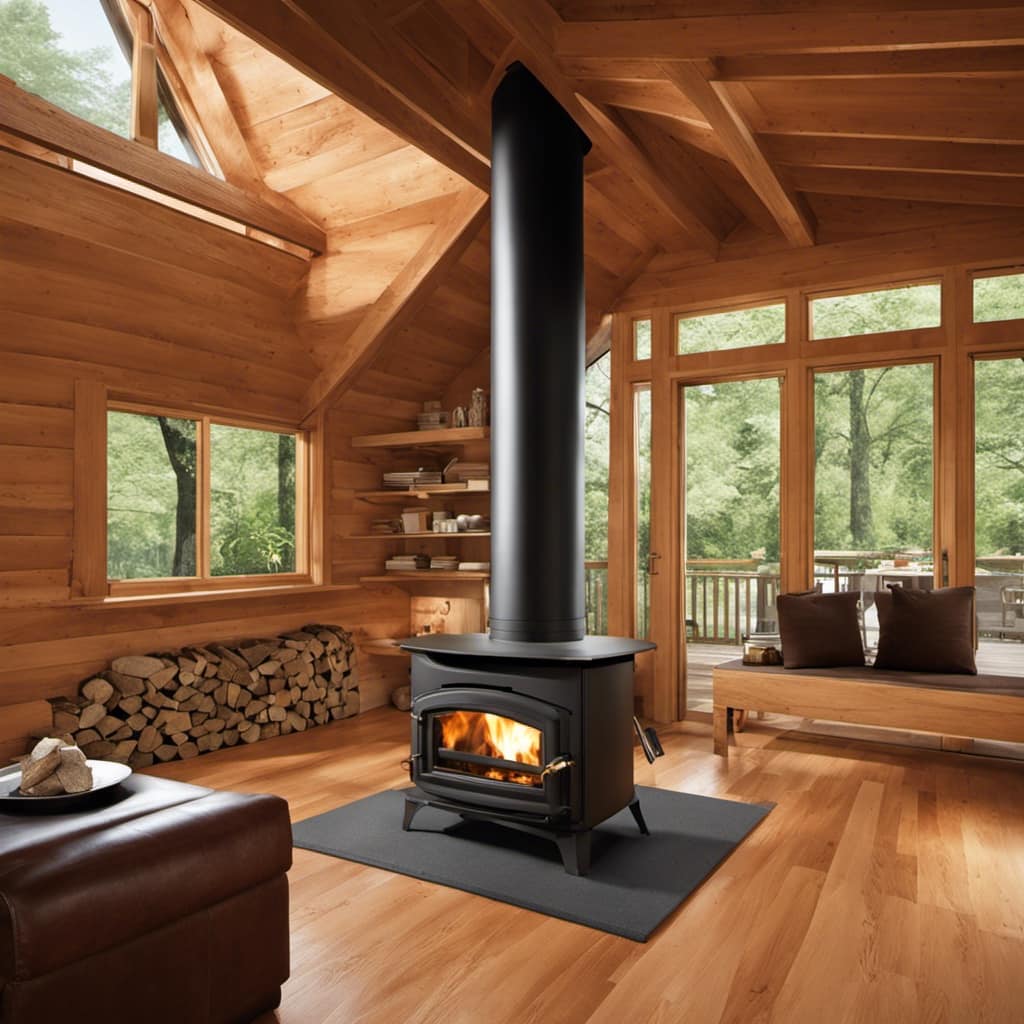
Can I Use Newspaper or Cardboard as Kindling for a Long-Lasting Burn?
Newspaper and cardboard can be used as kindling for a long-lasting burn, but they may not provide enough heat or last all night. Instead, I recommend using hardwood, which has higher energy content and burns slower.
Are There Any Safety Precautions I Should Take When Using a Wood Stove for an All-Night Burn?
Fire safety precautions and proper ventilation are essential when using a wood stove for an all-night burn. It is crucial to have smoke detectors, carbon monoxide detectors, and a fire extinguisher nearby. Regularly clean and inspect your stove to prevent any potential hazards.
Conclusion
By following these tips and techniques, you can ensure that your wood stove burns all night, providing you with a cozy and warm atmosphere throughout the night.
As the embers glow and the crackling sound lulls you to sleep, you can rest easy knowing that your wood stove is efficiently and effectively heating your home.
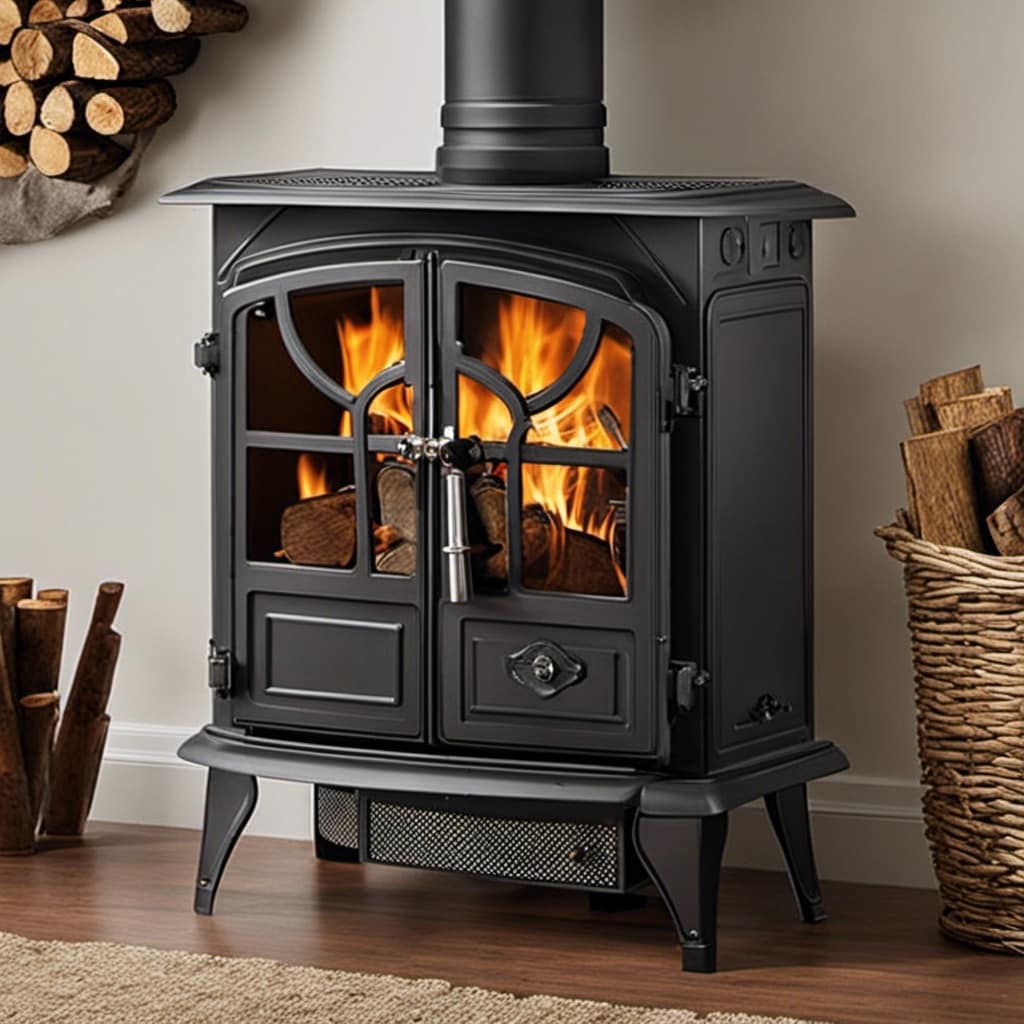
So, gather your well-seasoned wood, make the necessary preparations, and enjoy the comfort of a long-lasting burn that will keep you snug and content all night long.
Growing up surrounded by the vast beauty of nature, Sierra was always drawn to the call of the wild. While others sought the comfort of the familiar, she ventured out, embracing the unpredictable and finding stories in the heartbeat of nature.
At the epicenter of every remarkable venture lies a dynamic team—a fusion of diverse talents, visions, and passions. The essence of Best Small Wood Stoves is crafted and refined by such a trio: Sierra, Logan, and Terra. Their collective expertise has transformed the platform into a leading authority on small wood stoves, radiating warmth and knowledge in equal measure.




